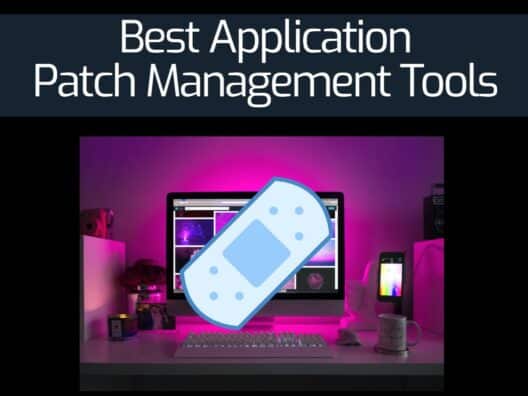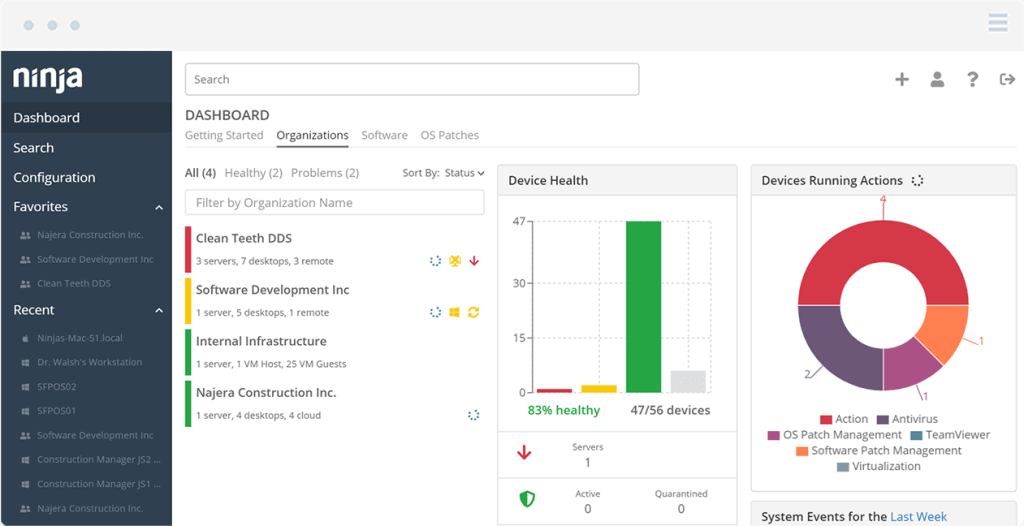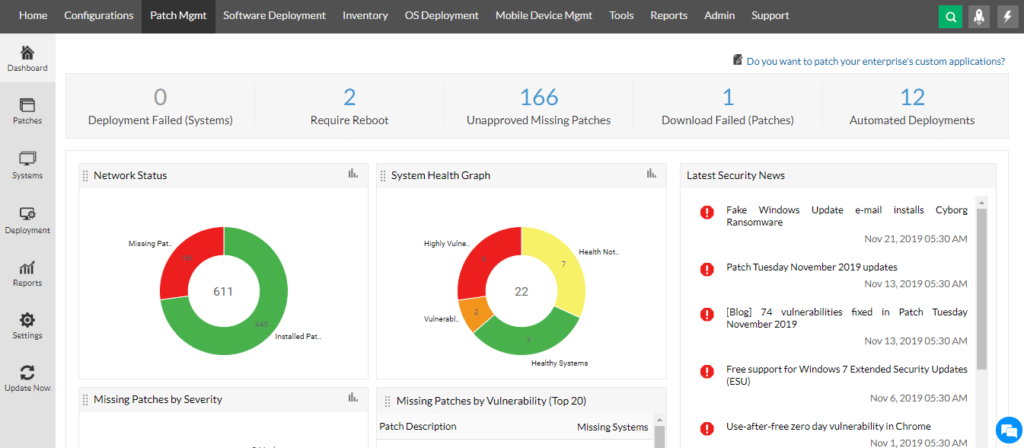To understand and choose the best application patch management tool, you first need to understand such questions like what patch management tools are, what patch management is, what they offer you, and what the benefits are after using these tools.
Patch management helps to keep your computers up-to-date. Updating computers is being done by obtaining the patches, testing those patches, and installing them on existing computer software and installed applications. This process of patch installing after checking thoroughly is commonly done by many software companies.
Here’s our list of the best application patch management tools:
- NinjaOne Patch Management – FREE TRIAL Best suited for big-market businesses, small IT departments, Managed Service Providers (MSPs), and businesses for IT services. Start a 14-day free trial.
- Atera – FREE TRIAL Offers a cost-effective and disruptive high-tech model that lets you manage an unlimited number of devices and endpoints at a flexible rate. Start a 30-day free trial.
- ManageEngine Patch Manager Plus – FREE TRIAL This patch management tool is best suited for all types of businesses. It has all the features to ease up patching. In addition, it automates patching processes for Windows, Mac, and Linux. Start a 30-day free trial.
- Syxsense A tool that stabilizes the Windows and laptops servers to one console, suitable for all types of businesses, from small to big.
- LANDesk Patch Manager A great tool that includes all the features for patching your application software very quickly.
- Syncro RMM This cloud-based package includes remote monitoring and management utilities, such as a patch manager for Windows and third-party applications.
- SysAid This tool includes all the patch management features for your application software. In addition, through SysAid IT Asset Management features, you can quickly patch your software servers and software application.
- Shavlik A complete suite including all the features for patch management. This application patch management tool offers you two types of patch management.
- GFI LanGuard Monitors and scans your application software network servers, gives you features for patching your application software, enhancing your application security, and managing your application's vulnerability.
Application patch management tools help in adding advanced features and missing patches to already existing applications. This process also allows you to manage your computer networks easily. If you have any difficulty with any software, many software companies can check and respond to several versions of software easily using these management tools. In addition, they can very quickly fix any issues with any version of your computer or application software.
Many people have security issues while using applications or new software on their computers. With application patch management tools, companies can quickly analyze and detect any absence of security. It can also explore the already existing application software and add more features to update the applications with the latest features.
Importance of Application Patch Management Tools
After understanding what patch management tools are, we now need to know why we want patch management tools. These tools’ benefits and various advantages make us choose them for our ongoing work and updated software and applications.
Let's have a look at these exciting features we get using these management tools:
- As you can quickly analyze and detect any security issues, patch management tools help you organize and improve your software's security.
- You know that patch management tools help you in the detection of bugs in the software application. But moreover, with erasing bugs, they also give more advanced and new features to software applications with the latest features.
- You need to know which software has stopped fixing bugs for your software application. Patch management tools detect that software and replaces it with a different one with features that can quickly detect, analyze, and fix bugs from your software.
- Now we know that patch management tools have the capacity and capability to detect and remove or even replace defective software; with this critical feature, it becomes easier to run your software application. It does this by reducing the rates for its decline, or faulty software can be easily detected after analysis. It can also be replaced, which can help the application software run smoothly.
- An ideal patch management tool installs patches to your software application regardless of your location. Whatever your location would be, you do not have to worry about whether the patch will work with your application software or not. Patch management tools can easily install and insert patches to your software for an easy working process.
How to Choose the Best Application Patch Management Tools?
But before choosing an ideal application patch management tool, you need to keep in mind some of the essential things for the smooth running of your application software, and those points are:
- Those patches could work on different devices like desktop computers, smartphones, tablets, etc.
- Patches should work on various several operating systems very quickly for your application software.
- As application patch management tools add and install patches to your application software, a record should be maintained to analyze and know what patch is installed with new and advanced features.
- With all these, there should also be an automation feature that can save you time by automating several tasks that consumes time.
Key Features of Application Patch Management Tools
You should also check for some essential features of any application patch management tool before choosing it for your application software. The key elements that should be present are:
- An innate dashboard for keeping a record of all the installed and updated patches
- Ability to consolidate or accommodate with other various tools
- Analyzing or examining a well-built system for keeping a record about all installed patches and bugs fixing
- Most importantly, whenever we use any software, we always look for an easy-to-use tool or comfortable software to work with. The more the software and tools are easy to use, the more they will advance in application upgrades
- The ideal tool should report all the happenings, whether regarding bug fixing or patch installation, in a straightforward way
- Another essential feature of an ideal application patch management tool is that it should have an excellent scanning feature, which can very quickly scan and detect or analyze any defects, bugs, and problems with the software. It can then remedy them by replacing it with a fresh one with various advanced advantages, which would be highly beneficial for your application software
Our methodology for selecting the best application patch management tools:
We've broken down our analysis for you based on these key criteria:
- Ability to automate patch installations efficiently across various platforms
- Providing detailed reporting on patches, updates, and installations
- Compatibility with a wide range of applications and operating systems
- Ease of monitoring and controlling the patching process
- Features supporting vulnerability management and pre-test packages
The Best Application Patch Management Tools
1. NinjaOne Patch Management – FREE TRIAL
NinjaOne Application Patch Manager tool is best suited for big-market businesses, small IT departments, Managed Service Providers (MSPs), and businesses for IT services. Using this patch management tool, you can smoothly run your application software. In addition, this tool provides a proper set of tools and features to analyze, detect, manage, secure, and monitor your software's work progress.
Key Features:
- Automates the patch management for third-party application software for Windows and macOS devices with ease
- Monitor your Windows and macOS device servers
- You can also get hardware as well as the software directories for your software application
- Remote suite tools and features allowing you to monitor all your devices remotely without interfering with end-users
- Easily control, analyze, and record all the patch processes with the management of all your devices without consuming much time
Why do we recommend it?
NinjaOne is recommended for its automated patch management capabilities for third-party applications on Windows and macOS devices. Its remote suite tools allow for efficient management of devices without disrupting end-users.
NinjaRMM provides you with natural features for automated patch management for many Managed Service Provider (MSPs) and IT businesses and IT departments.
Who is it recommended for?
This tool is ideal for large-market businesses, small IT departments, MSPs, and IT service businesses. Its platform-agnostic web-based management and silent installation features make it a versatile choice for diverse IT environments.
Pros:
- Can silently install and uninstall applications and patches while the user works
- Patch management and other automated maintenance tasks can be easily scheduled
- Platform agnostic web-based management
Cons:
- Lacks support for mobile devices
You can get a custom quote when you register for a 14-day free trial.
2. Atera – FREE TRIAL
The Atera Patch Management tool is also made for Managed Service Providers (MSPs), IT departments, and IT consultants. It is a cloud-based management tool. You can work remotely on this patch management tool to manage updates and install patches easily.
Key Features:
- Easily manage your important tasks and servers for both Windows and macOS
- Keep your application software and devices updated with the latest features, you can schedule recurring patches for Windows and Mac on a weekly or monthly basis
- Easily keep an eye and view all the patch deployment occurrences to have a task summary about your software changes
- Install all the critical security features and patches for your application software
Why do we recommend it?
Atera is recommended for its cloud-based patch management capabilities, offering flexibility in managing updates and patches remotely. Its minimalistic interface, coupled with flexible pricing, makes it a viable option for small businesses and MSPs.
Who is it recommended for?
Atera is ideal for Managed Service Providers, IT departments, and IT consultants, especially those who need a solution with multiple PSA features and help desk support. Its focus on MSP-related tools may limit its utility for businesses not operating in this sector.
Pros:
- Minimalistic interface makes it easy to view the metrics that matter most
- Flexible pricing model makes it a viable option for small businesses
- Includes multiple PSA features, great for helpdesk teams and growing MSPs
- Can track SLAs and includes a time-tracking option for maintenance tasks
Cons:
- Focuses heavily on MSP-related tools, other businesses may not be able to utilize multi-tenant features
Atera Patch Management has set a fixed price for unlimited devices. Moreover, Atera also has an Application Patch Management Automation feature. It also provides you a task summary about all the patches installed or updated. Pricing starts at $129 per technician. You can get started with a fully functional 30-day free trial.
3. ManageEngine Patch Manager Plus – FREE TRIAL
ManageEngine Patch Manager Plus is best suited for all types of businesses. It has all the features to ease up patching. In addition, it automates patching processes for Windows, Mac, and Linux. You get more than 360 third-party application software updates and over 350 application software updates using this tool.
Key Features:
- Quickly patch over 250 third-party applications like Java, Adobe, and Chrome
- Boost security to your application software
- Detailed reports for all the insights and patch installs as well as for updates
- Tests for patches, analyses them, and approves or declines them from your software
Why do we recommend it?
ManageEngine Patch Manager Plus is recommended for its ability to automate patching processes across Windows, Mac, and Linux. Its extensive third-party application support and in-depth reporting make it ideal for enterprise management.
ManageEngine offers you a patch management task summary and detailed reports through which you can easily track and control the patching processes on your application software and devices.
Who is it recommended for?
This tool is best suited for all types of businesses seeking a flexible patch management solution. Its rich feature set, however, may require a learning curve, making it more appropriate for users with more technical expertise.
Pros:
- Flexible deployment options across multiple platforms
- Can be installed on both Windows and Linux platforms, making it more flexible than other on-premise options
- Offers in-depth reporting, ideal for enterprise management or MSPs
- Integrated into more applications than most patch management solutions
Cons:
- Feature-rich platform that takes time to fully explore and learn
Start a 30-day free trial.
4. Syxsense
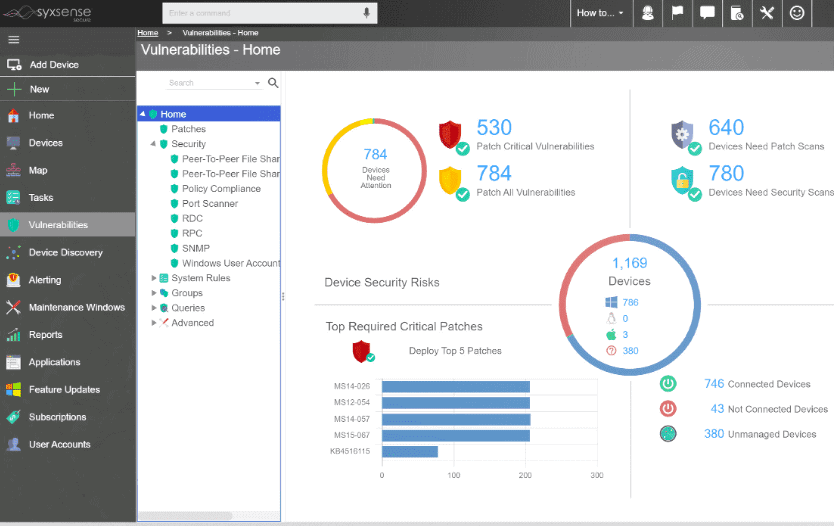
Syxsense Patch Management tool is best suitable for all types of businesses, from small to big. This application patch management tool stabilizes the Windows and laptops servers to one console. As a result, you can very easily keep your laptops, desktops, and your end-users updated while making changes remotely without interrupting your users' work.
Key Features:
- Very quickly patch everything with every feature, every update, patched with much ease
- Third-party application software patches allow support for third-party servers like Java, Adobe, and Chrome
- Detailed information about every installed and updated patch
- Provides task summary and schedules task summaries for automatic receipt
Why do we recommend it?
Syxsense is recommended for its intuitive user interface and cloud-based service, which make desktop management flexible, especially for remote teams. Its flexible pricing and support for third-party servers like Java, Adobe, and Chrome enhance its appeal.
Moreover, you can add new and latest security features and patches to reduce security risks and their issues. You can also install software application updates for your Microsoft, Windows 10 update features, Linux, and third-party application software like Java, Chrome, and Adobe.
Who is it recommended for?
Syxsense is suitable for businesses of all sizes, offering a streamlined solution for patching everything from Windows and Linux servers to third-party applications. Its focus on cloud-based management makes it an excellent choice for teams with remote work environments.
Pros:
- Simple and intuitive user interface, great use of color to display key metrics
- Cloud-based service makes desktop management flexible, especially for remote teams
- Flexible pricing makes it a great choice for any size network
- Offers configuration profiles that streamlines onboarding new devices
Cons:
- Would benefit from a longer 30-day trial period
5. LANDesk Patch Manager
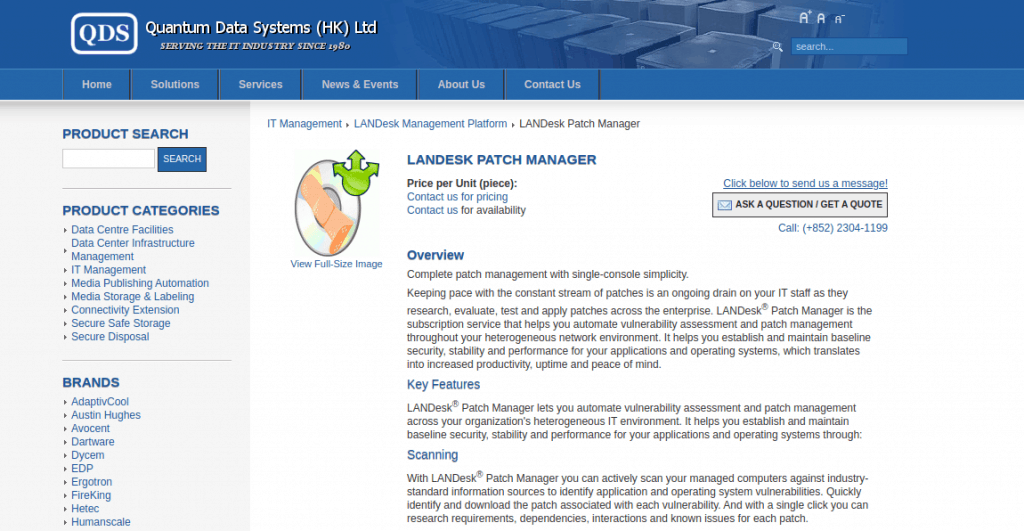
LANDesk Patch Manager is a great tool that includes all the features for patching your application software very quickly. Using this tool, you can easily control and keep an eye on networks and update features for your application software.
Key Features:
- Easily recognize and remediate OS and all outsider application weaknesses on frameworks running Windows, Red Hat, SUSE, and macOS X at the same time
- Worldwide booking guarantee that gadgets are fixed at the ideal time regardless of location over a customer VPN
- Can be used in an independent mode
Why do we recommend it?
LANDesk Patch Manager is highly recommended for its comprehensive and simultaneous patching capabilities across diverse OS platforms, including Windows and macOS X. Its global scheduling and independent mode offer unparalleled flexibility and control in managing software vulnerabilities.
This application patch management tool is a perfect choice for automating your patching processes for your application software.
Who is it recommended for?
This tool is ideal for organizations seeking an all-in-one solution to manage OS and third-party application vulnerabilities, especially beneficial for environments with diverse operating systems and those requiring remote patching capabilities.
Pros:
- Easy to use – simple interface and reporting
- Can be deployed as a lightweight add-on
- Supports a wide range of environments (Linux, Windows, Mac, etc)
- Combines patching with asset management
Cons:
- Better suited for larger networks and MSPs
6. Syncro RMM
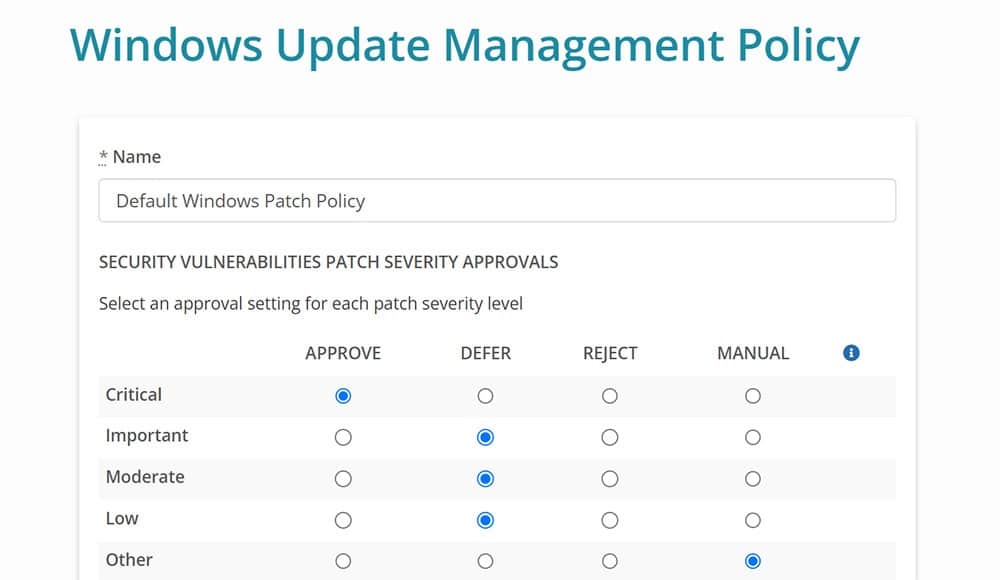
Syncro RMM is a package of tools for use by the technicians of managed service providers. This system will patch Windows and the applications that run on top of that operating system. Other utilities in the RMM bundle include automated monitoring for networks and also endpoint monitoring for computers running Windows and macOS. The bundle also includes the Splashtop system for remote access.
Key Features:
- You get a linked professional services automation system with the RMM and that provides services for MSP managers.
- IT asset scanning automatically detects outdated software and queues up their updates.
- The patch manager can also be used to launch task automation scripts, such as temporary file cleanup.
- The RMM has its own scripting language for task automation and there is a library of pre-written scripts.
- System problems provoke alerts that are channeled through your ticketing system and they can also generate SMS messages to technicians
Why do we recommend it?
Syncro RMM is recommended for its extensive toolset tailored for managed service providers, including patch management for Windows and automation capabilities. Its ability to handle IT asset scanning and alert management through a single platform is commendable.
The entire platform is offered as a single plan – there aren’t separate subscription plans for the RMM and the PSA.
Who is it recommended for?
This tool is particularly suitable for MSP technicians needing a comprehensive remote monitoring and management solution. Its lack of support for macOS or Linux patches, however, may limit its applicability for some networks.
Pros:
- Patch management for Windows as well as for applications
- Access to the dashboard through a browser or mobile app
- Patch manager runs unattended and reports on completion statuses for each update
Cons:
- Doesn’t patch computers running macOS or Linux
The price for the package is calculated per technician and the minimum number of seats is one. You can try out the entire system with a 14-day free trial.
7. SysAid
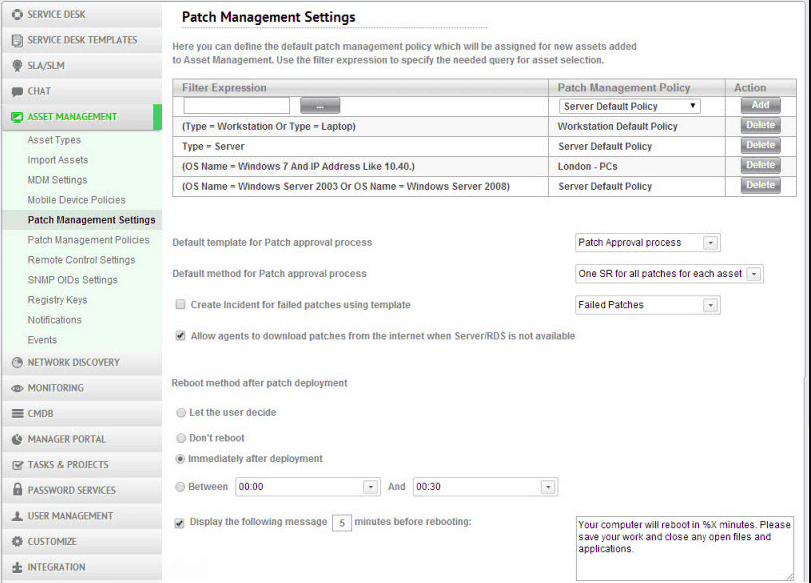
SysAid Patch Management Tool is best suited for all types of businesses. This tool includes all the patch management features for your application software. In addition, through SysAid IT Asset Management features, you can quickly patch your software servers and software application.
Key Features:
- Helps you to patch your servers using OEM technology, allowing you to quickly patch everything without consuming much of your time
- IT Administrators can get a detailed report about all the patch processes and deployment of these patches for all active IT Assets
- Customize features to patch your application software according to your needs
- Detailed reports to track and check all the patch processes and updating features
Why do we recommend it?
SysAid stands out for its efficient use of OEM technology in patching servers, saving significant time. Its detailed reporting and customization options make it a valuable asset for IT asset management.
Who is it recommended for?
SysAid is best suited for small to medium-sized businesses looking for an integrated solution for SNMP monitoring and patch management, offering flexibility in choosing relevant features for their specific needs.
Pros:
- Offers SNMP monitoring through a simple plugin
- Flexible pricing options allow you to choose the features you pay for
- Good option for those looking for SNMP monitoring and patching solution
Cons:
- Lacks enterprise features – better suited for small to medium size networks
Moreover, this tool is also used to update your Windows software server and desktop computer software servers to install the latest and advanced features and patches.
8. Shavlik
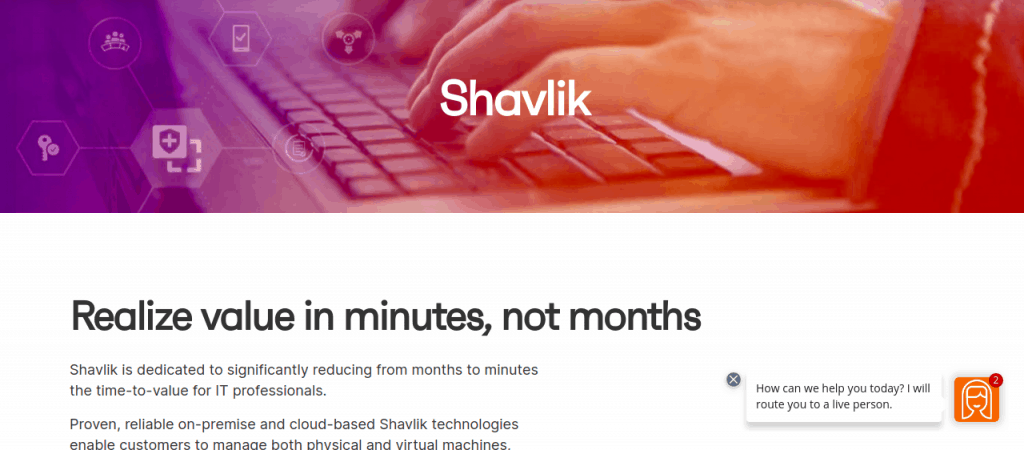
Shavlik is a complete suite including all the features for patch management. This application patch management tool offers you two types of patch management. One is Shivalik Protect+ empower, and the second is Shivalik Patch.
You can patch third-party application software with the help of this tool. In addition, this tool offers you an agentless patching process.
Key Features:
- Sends patches to your physical or virtual resources, including Microsoft Windows, macOS X, and an outsider from a focal, natural control center
- Anticipate first-class results using this patch management tool when building far-reaching patch strategies
- Boosts your interest in SCCM by adding an outsider fixing with an extra local answer for SCCM. It also diminishes the danger and risk of an unpatched outsider or third-party applications software
Why do we recommend it?
Shavlik is recommended for its comprehensive suite that offers versatile patch management solutions, including agentless patching. Its ability to cater to a wide range of operating systems and enhance SCCM investments makes it a robust choice.
Who is it recommended for?
Ideal for businesses looking for a lightweight, multi-OS patch management solution, Shavlik is particularly beneficial for those needing agentless third-party patching and extensive options to tailor the patching process.
Pros:
- Includes third-party agentless patching – great lightweight option
- Supports multiple operating systems
- Offers a wide range of options to fine-tune the patching process
Cons:
- Can take time to fully explore all feature
9. GFI LanGuard
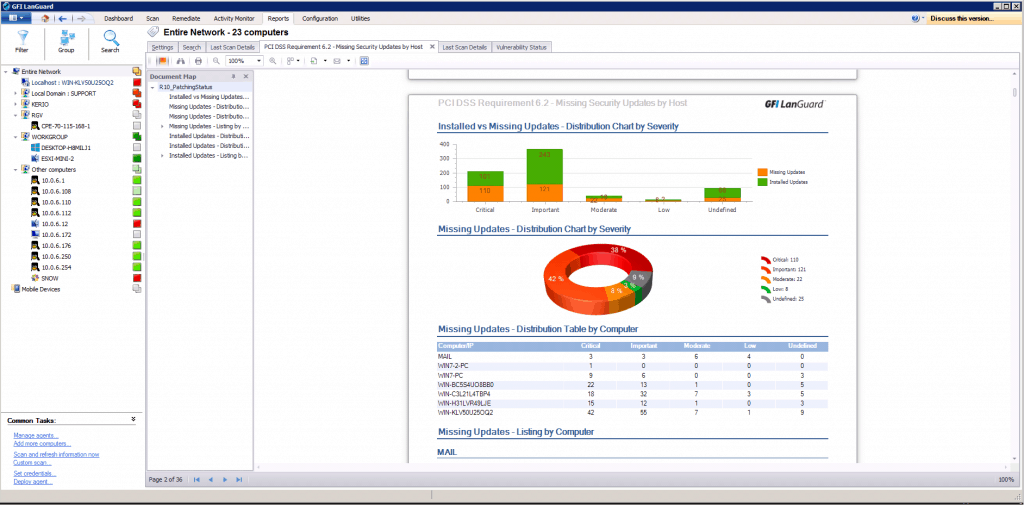
GFI LanGuard Patch Management tool secures your network and reduces the risk for threats. You can easily monitor and scan your application software network servers.
This patch management tool gives you features for patching your application software, enhancing your application security, and managing your application's vulnerability.
Key Features:
- Automatically patch third-party software applications using this tool like Firefox, Mozilla, Adobe Reader, Chrome, and much more
- Checking for software vulnerability is very important to avoid software crashing, keep a check on over 60000 vulnerabilities for your application software
- Viewing and controlling the network is the second important thing to avoid any bugs in your application software, this tool helps you to view networks through its network auditing features
Why do we recommend it?
GFI LanGuard is a top choice for its multi-platform support and ability to patch popular third-party applications. Its integration of vulnerability assessment with patch management enhances overall network security.
Who is it recommended for?
This tool is recommended for security teams and IT professionals in need of a comprehensive patch management solution with robust third-party application support, network auditing, and vulnerability assessment features.
Pros:
- Multi-platform support for Microsoft, Linux, and Mac
- Includes support for patching other popular third-party applications like Adobe, Java, and Runtime
- Simple, yet effective interface
- Built-in vulnerabilities assessment uses patch information to help gauge risk for security teams
Cons:
- Would like to see more features for scheduling patches
- Could use more up-to-date support for newer third-party applications
Conclusion
Application Patch Management tools are very beneficial for detecting and deploying patches to your application software.
NinjaOne Patch Management, Atera, and ManageEngine Patch Manager Plus are the top-recommended Application Patch Management software. In addition, ManageEngine provides your free plans, and their pricing is also based on the number of servers if you are looking for advanced and updated features.
We have concluded the best Patch Management tools for you in this article. So look for what suits you and your business the best and start patching your software.
Related Post: Best Patch Management Tools and Software

